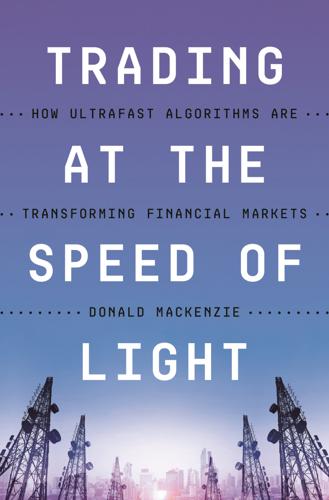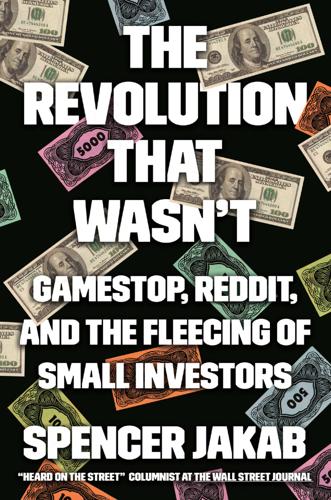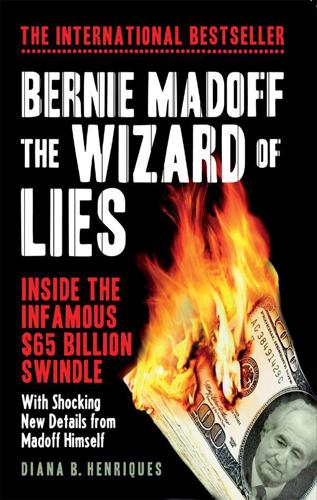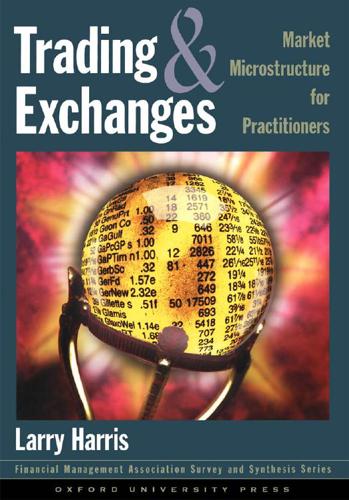
Trading at the Speed of Light: How Ultrafast Algorithms Are Transforming Financial Markets
by
Donald MacKenzie
Published 24 May 2021
By the end of the 1960s, the manual settlement processes that underpinned share trading (the transfer of money and especially of shares, which were then still paper certificates) had become clogged. Piles of unprocessed documents, delays, omissions, errors—and even theft of share certificates—accumulated (SEC 1971). This “paperwork crisis,” as it became known, was exacerbated by a sharp downturn in US share prices at the end of the 1960s. Stockbrokers began to fail in increasing numbers, threatening to leave hundreds of thousands of members of the public who had invested via those firms with large losses. Just as food-price inflation focused attention on the trading of agricultural futures (as discussed in chapter 2), Wall Street’s very public debacle motivated sharply increased congressional interest in reforming the way shares were traded.
…
The SEC also moved US share trading as a whole some of the way toward Island’s fine price grid, in 2000–1, reducing the minimum price increment in US share trading from a sixteenth of a dollar to one cent, a process that market participants called “decimalization.” At least equally important, however, to the rise of new HFT-friendly electronic trading venues were the long-term effects of much earlier events: the 1960s’ “paperwork crisis” and the resultant pressure from Congress for reform of the processes of clearing and settlement. These processes were, and remain, crucial material underpinnings of share trading, in that they involve the registration and guaranteeing of trades, the transfer of the ownership of shares, and the corresponding cash payments (for which see Millo, Muniesa, Panourgias, and Scott 2005).
…
Clearing—an everyday, undramatic process—is pivotal enough that, in the European Union, even national governments have become involved in conflict over how it should be organized.5 In the background to the contrast between US futures and shares in respect to clearing is the differences in the interaction—the “hinge,” to use Andrew Abbott’s terminology—in the 1970s between the political system and, on the one hand, futures exchanges, and, on the other hand, stock exchanges. In the case of futures, as described in chapter 2, the hinge was in a sense quite specific, and the resultant reforms were strongly influenced by futures exchanges. In the case of shares, as sketched in chapter 3, the “paperwork crisis” of the late 1960s created a substantially broader incentive for members of Congress to become involved, and the reforms that resulted were much less closely shaped by stock exchanges. One consequence of those different interactions with the political system is the big difference, discussed in previous chapters, between the signals (patterns of data that inform how algorithms trade) available to HFT algorithms trading shares and those trading futures.

The Revolution That Wasn't: GameStop, Reddit, and the Fleecing of Small Investors
by
Spencer Jakab
Published 1 Feb 2022
Their costs mostly went up while big funds reaped immediate savings. Buying and selling blue chip stocks for mom and pop was a hassle and not particularly profitable. During the surge in retail stock trading of go-go growth companies in the late 1960s when the number of shares being traded doubled in the span of three years, Wall Street was slammed by the “Paperwork Crisis,” and the New York Stock Exchange was forced to close every Wednesday for months just to catch up. It wasn’t until discount brokers like Charles Schwab really got a foothold in the early 1980s and stock trading became more automated that it started to get cheaper and easier for self-directed investors to buy and sell stocks.
…
Morgan Asset Management, 255–56 JPMorgan Chase, 160, 217 K KaloBios, 39 Kearns, Alex, 103–4 Kindleberger, Charles P., 179 Klarman, Seth, 184 Koss, 132, 169, 188, 224 Kruger, Justin, 28 Kynikos Associates, 77 L Ladies’ Home Journal, 150 Lamberton, Cait, 54, 62 Lamont, Owen, 80 Langer, Ellen, 27 Langlois, Shawn, 45 Laufer, Henry, 237 Lay, Kenneth, 85 Lebed, Jonathan, 163 Leder, Michelle, 239 Ledger, Heath, 138 Left, Andrew, 39, 116–26, 148, 191, 214, 217 GameStop and, 120–24, 129, 130, 133, 146 harassment of, 122 WallStreetBets and, 121–23, 126, 129, 130, 133, 136, 238 Lehman Brothers, 80, 117 Lending Tree, 162 Levie, Aaron, 26 Lewis, Michael, 16, 88 Lindzon, Howard, 24, 49, 176 LinkedIn, 239 Livermore, Jesse, 78–79 locating a borrow, 72–73, 80 Loeb, Dan, 111 Lombardi, Vince, 8 Long-Term Capital Management, 260 Loop Capital, 128 Los Angeles Times, 215 loss aversion, myopic, 236 lotteries, 62, 239, 241, 242 Lowenstein, Roger, 260 Lucid Motors, 164 M Mad Money, 254 Madoff, Bernie, 117, 206 MagnifyMoney, 162 Mahoney, Seth, 19, 31, 176–77 Malaysia, 75 Malkiel, Burton, 253 Manias, Panics, and Crashes (Kindleberger), 179 Manning, Peyton, 64 Man Who Solved the Market, The (Zuckerman), 237 Maplelane Capital, 217 March Madness, 57 Marcus, 257 margin calls, 203–5 margin debt, 58–59, 62, 67, 138, 188 Markets Insider, 103 MarketWatch, 45, 180 MassMutual, 87, 131, 171 Mavrck, 142 Mayday, 48–50, 66 McCabe, Caitlin, 128–29 McCormick, Packy, 23, 35, 104, 202 McDonald, Larry, 99 McDonald’s, 154 McHenry, Patrick, 239 McLean, Bethany, 85 Medallion Fund, 237 MedBox, 117 Melvin Capital Management, 6–8, 56, 72, 94–96, 110–12, 114, 119, 121, 123, 128–30, 132, 135, 136, 146, 189, 190, 202, 205, 217, 218, 222, 227 meme stocks, xii–xiv, 5, 7–9, 11, 12, 14, 22, 30, 32–34, 36, 39, 40, 47, 54, 63, 67, 72, 73, 76, 100, 108, 123, 125, 127, 129, 132–33, 135, 137–40, 146, 147, 153–55, 157, 159, 160, 162, 164, 169, 170, 178, 179, 181, 183, 185, 191, 193, 194, 198–99, 204–5, 208, 219, 220, 222, 227, 229, 230, 237, 238, 240, 246 AMC, 39, 93, 125, 127, 132, 169, 188, 220–21, 224–26 Bed Bath & Beyond, 115, 133, 188 BlackBerry, 93, 115, 133, 169, 178, 188, 224 bot activity and, 165, 166 GameStop, see GameStop, GameStop short squeeze insiders of, 224 Koss, 132, 169, 188, 224 margin debt and, 58 Naked, 132, 188 Nokia, 169, 178, 188 payment for order flow and, 207 Robinhood’s trading restrictions on, 187–89, 194, 195–200, 203, 206 Merton, Robert, 101, 102, 108 Microsoft, 46, 93 Mihm, Stephen, 48 millennials, 21, 26, 27, 56, 71, 88, 142, 143, 148, 162, 242, 246, 255 Minnis, Chad, 126, 157, 242 MoneyWatch, 59 monthly subscription services, 32 Morgan Stanley, 28, 55, 178, 219 Morningstar, 216, 244, 245, 254, 255 Motherboard, 131–32 Motter, John, 215–17, 226 Mudrick, Jason, 220–21 Mudrick Capital Management, 220 Mulligan, Finley, 230 Mulligan, Quinn, 142, 214 Munger, Charlie, 183–84, 241 Murphy, Paul, 78 Musk, Elon, 19, 75, 82–83, 92, 124, 143, 149, 152–53, 155–57, 160, 161, 167, 212, 216 tweets of, x, 60, 82, 83, 124, 144, 152–54, 161, 170 Must Asset Management, 221 mutual funds, 139, 151, 221, 234, 244, 245, 254–56 myopic loss aversion, 236 N Naked Brand, 132, 188 Nasdaq, 60, 92, 98, 104 Nasdaq Whale, 98, 104–6, 108, 109, 227 Nathan, Dan, 192 National Council on Problem Gambling, 31, 57 National Futures Association, 118 Nations, Scott, 99 Nations Indexes, 99 NCAA Basketball, 57 Netflix, x–xi, 15, 50, 98, 133, 208 Netscape, 24 Neumann, Adam, 105 New Yorker, 143 New York Mets, 8, 161 New York Post, 124, 172 New York Stock Exchange, 49 New York University, 20, 82, 177 Nikola, 64 NIO, 120 Nobel Prize, 101, 260 Nokia, 169, 178, 188 nudges, 31–32, 235–36 Nvidia, 98 O Obama, Barack, 13, 38 Ocasio-Cortez, Alexandria, 160, 197 Occupy Wall Street movement, 12, 125 Odean, Terrance, 235, 238, 243 Odey, Crispin, 126 Ohanian, Alexis, 12, 37–38, 125 O’Mara, Margaret, 38, 156, 157 Omega Family Office, 191 O’Neal, Shaquille, 64 Oppenheimer, Robert, 83 options, 34–35, 99–107, 217 call, see call options delta and, 107, 108 losses and quick approval processes for, 103 put, 46, 99, 106, 111–12, 148 Robinhood and, 34–35, 102–4, 106, 108–9 Options Clearing Corporation, 102 P Pagel, Michaela, 235 Palantir Technologies, 120 Palihapitiya, Chamath, 143, 144, 152–53, 155, 157–58, 160, 164, 212, 234, 246, 253 Palm, 84 PalmPilot, 84 Pao, Ellen, 38 Paperwork Crisis, 49 Parker, Sean, 38 payment for order flow, 10, 33, 153, 196, 206–9 Penn National, 57 penny stocks, 60, 120, 133, 166, 167 Permit Capital, 223 Pershing Square Holdings, 56 Pets.com, 90 PetSmart, 89 Pew Research, 71 Physical Impossibility of Death in the Mind of Someone Living, The (Hirst), 7 Piggly Wiggly, 78–79 PiiQ Media, 166 PIMCO, 216 Plotkin, Gabriel, 41, 56, 67, 73, 80, 85, 86, 95–96, 110–12, 114–15, 116, 122, 123, 129, 130, 133, 140, 146, 148, 157, 158, 161, 191, 197, 213–14, 217, 218, 227, 240, 246, 250, 253 at congressional hearing, 6–11 Porsche, 77 Portnoy, Dave, 57, 152–55, 158–59, 161, 181, 188–89, 212 Povilanskas, Kaspar, 195 Pruzan, Jonathan, 219 Psaki, Jen, 192 Public.com, 196, 207, 209 pump and dump, 163 put options, 46, 99, 106, 111–12, 148 Q Qualcomm, 46 R RagingBull, 163 Random Walk Down Wall Street, A (Malkiel), 253 Raskob, John J., 150–52, 154, 156 Raytheon, 153–54 RC Ventures LLC, 114 Reagan, Ronald, 156, 234 Reddit, xi, xii, 11–12, 19, 22, 23, 25, 36–39, 41, 42, 107, 122, 125, 162, 164, 199 founding of, 37–38 Gill’s influence on, 141–42; see also Gill, Keith; WallStreetBets karma on, 47, 141–42 mechanics and demographics of, and GameStop, 37 offensive subreddits on, 38 r/ClassActionRobinHood, 196 r/GMEbagholders, 140 r/investing, ix, 46 r/wallstreetbets, see WallStreetBets Super Bowl ad of, 12 Volkswagen squeeze and, 78 Reddit Revolution, xv, 41, 42, 75, 99, 152, 170, 192, 206, 211, 219, 220, 230, 246, 261 see also GameStop, GameStop short squeeze; WallStreetBets rehypothecation, 80, 92 reinforcement learning, 35 Reminiscences of a Stock Operator (Lefèvre), 78 Renaissance Technologies, 237 retail trading, xiii, xiv, xvi, 4, 7, 9–14, 49, 56–59, 63–64, 66, 67, 81, 98, 140–41, 143, 169–70, 178, 181, 183, 186, 194, 218, 237, 238, 244, 247 retirement accounts and pension funds, 5, 13, 27, 31–32, 41, 69, 76, 77, 81, 171, 182, 234, 235, 245, 252, 255, 256 Rise of the Planet of the Apes, 135–36 RiskReversal Advisors, 192 Ritter, Jay, 63, 65 Roaring Kitty (Gill’s YouTube persona), 2, 18, 45, 48–49, 92, 130, 133, 144, 171, 174–75, 191, 211, 213 Roaring Kitty LLC, 171 Robinhood, xi, xiii, xv, 4–6, 13–14, 19, 22–35, 41–42, 50, 53, 55, 57, 61, 66, 70, 81, 98, 139, 141, 153, 154, 157, 158, 161, 176, 178, 183, 184, 187–90, 193, 194, 195–210, 212–13, 219, 237–38, 243, 245, 246, 259 account transfer fees of, 54 average revenue per user of, 66–67 Buffett on, 240–41 call options and, 97–98 Citadel and, 10, 11 clearinghouse of, 187 commissions and, 49, 50 customer loan write-offs of, 205 daily average revenue trades of, 59 daily deposit requirement of, 205 former regulators hired by, 239–40 founding of, 3, 23–25, 90 funding crisis of, 187–88, 193, 198, 203, 205–6 gamification and, 29–31 Gold accounts, 32, 58, 97, 202 growth of, 25–26, 50 herding events and, 238 Hertz and, 61 hyperactive traders and, 193, 202, 207, 236 initial public offering of, 200–201, 219 Instant accounts, 32 Kearns and, 103–4 lawsuits against, 196 margin loans of, 58–59, 205 median account balances with, 50, 54 options and, 34–35, 102–4, 106, 108–9 payment for order flow and, 10, 33, 196, 206–9 revenue from securities lending, 73 risky behavior encouraged by, 202–3 Robintrack and, 53, 61 SPACs and, 64 stimulus checks and, 56 Super Bowl ad of, 28, 30, 200 technical snafus by, 53–54 Top 100 Fund and, 61 trading restricted by, 187–89, 194, 195–200, 203, 206, 209 valuation of, 49 WallStreetBets and, 22–23 wholesalers and, 33–35, 49, 104, 106 Robin Hood (charitable foundation), 196–97 robo-advisers, xv, 27, 257–58 Betterment, 27, 54, 183, 193, 242, 257, 258, 261 SoFi, 27, 56, 57, 158 Rockefeller, John D., 9 Rodriguez, Alex, 64 Rogers, Will, 163 Rogozinski, Jaime, 23, 39, 46, 50, 53, 55, 70–71, 97, 122, 138, 144, 190, 231 Roper, Barbara, 29–30, 35, 54, 185, 241 Rozanski, Jeffrey, 46 Rukeyser, Louis, 156 Russell 2000 Value Index, 125, 191 S S3 Partners, 76, 81, 130, 133, 170, 217 SAC Capital Advisors, 7, 110 Sanders, Bernie, 65–66, 198 S&P (Standard & Poor’s), 83 S&P Dow Jones Indices, 70, 254 S&P 500, 76 Sanford C.

The Divide: American Injustice in the Age of the Wealth Gap
by
Matt Taibbi
Published 8 Apr 2014
At the height of the crisis, this bank-created MERS system was in charge of maintaining the records for 67 million mortgages—and the entire company was staffed by just forty-five people. Years later, as Holder and Breuer manned the two top jobs at Justice, and twenty-two other attorneys from the firm sat in key positions at the department, the nation experienced an unprecedented paperwork crisis in its court system, as literally millions of foreclosures were pushed into court by banks brandishing perjured and/or fraudulent paperwork. Many of the phony docs were MERS mortgages. The register of deeds in just one city, Salem, Massachusetts, sent Holder the paperwork for 31,897 fraudulent foreclosure documents and asked for a criminal investigation, because of the “pattern of fraud” they demonstrated.

Bernie Madoff, the Wizard of Lies: Inside the Infamous $65 Billion Swindle
by
Diana B. Henriques
Published 1 Aug 2011
Fairfield Greenwich Amended Complaint.) 119 “Come up this afternoon”: According to Tucker’s testimony, Madoff extended a similar invitation that day to Carlo Grosso, a principal of the Kingate funds based in London, who was visiting New York. 119 Wall Street’s central clearinghouse, the Depository Trust & Clearing Corporation: Originally named the Depository Trust Company, the clearinghouse later combined with a separate clearinghouse called the National Securities Clearing Corporation, on whose board Madoff served in the late 1980s, and was renamed the Depository Trust & Clearing Corporation, or DTCC. According to the official DTCC history, the clearinghouses were “both created in response to the paperwork crisis that developed in the securities industry in the late 1960s and early 1970s. At that time, brokers still exchanged paper certificates and checks for each trade, sending hundreds of messengers scurrying throughout Wall Street clutching bags of checks and securities.” 120 Tucker later told regulators about this pivotal visit: Galvin Fairfield Greenwich Complaint, transcript excerpts from interview with Jeffrey Tucker, Mar. 12, 2009, pp. 97–100. 121 “This is a great exam for us!”

Trading and Exchanges: Market Microstructure for Practitioners
by
Larry Harris
Published 2 Jan 2003
* * * ▶ The Wednesday Trading Halts of 1968 By 1968, volumes in U.S. equity markets had grown to the point that brokerage firms could not keep up with their paperwork. Accounting, clearing, and settlement then still involved substantial manual efforts. From June through December 1968, exchanges closed on Wednesdays to give the back offices a chance to catch up. They also closed two hours early on the other weekdays. Firms ultimately solved the “paperwork crisis” by automating their accounts. ◀ * * * 7.2.2 Back Office Operations The back office of a brokerage is responsible for supporting the trading activities of the firm and its clients. The primary responsibilities of the back office include the following activities: • Maintaining accounts